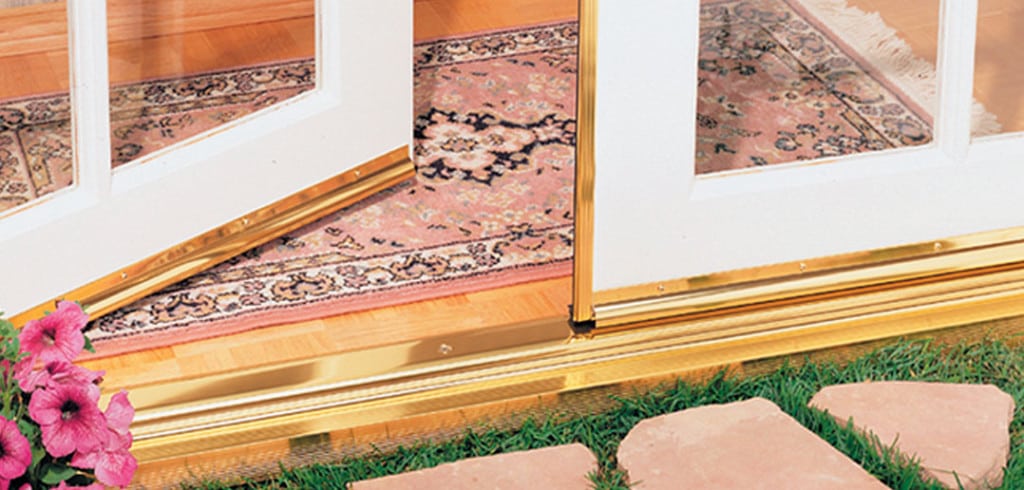Dear Jim: My front door is wood with a window, and the back door is metal. They are the original ones, and neither is very efficient nor airtight. I cannot afford new ones. How can I improve their efficiency myself? — Al R.
Dear Al: Energy losses from inefficient entry doors can account for a significant portion of your monthly utility bills. When leaky doors create drafts, people tend to set the furnace thermostat higher. This wastes even more energy.
There are ways to improve the efficiency of old doors, but don’t immediately eliminate the possibility of installing new ones. The costs of some well-insulated steel and fiberglass doors, especially those for the back door without glass, are very reasonable. A prehung door in its own frame is not difficult to install yourself.
Before making a decision, carefully inspect your old doors. If they are in bad condition, it will be difficult to improve their efficiency by a meaningful amount. First, make sure the wood door is not rotting. Then place a long straightedge across the door to see if it is badly warped.
Rust, not warping, is the most common problem with metal doors. The first place to check is along the bottom by the weather stripping on either side. Rainwater tends to collect there, and it is not always painted well.
If you find small holes rusted through, they can be repaired with car body filler and then painted. First, try to determine the reason water is collecting there and correct the problem. Clean out as much rust as possible and fill with body filler.
If the doors are reasonably sound, check for the location of the air leaks. At night, have someone shine a flashlight from outdoors around the seals and check for light indoors. This will highlight significant leaks. On a windy day, move a stick of lighted incense around the seals and watch the trail of the smoke to find the minor leaky areas. Check the astragal on double doors. Usually the raised half-round overlap where pairs of doors meet, it acts as a seal between them.
Often with wood doors, especially ones with compression weather stripping, the main problem is simply the latch plate not holding the door tightly closed against the weather stripping. One solution is to reposition the latch plate. This will require filling in the old screw holes and drilling new ones. Chisel away some of the wood in the recess for the latch plate. You can also install an adjustable latch plate. You may want to reposition it for summer and winter as the door and frame expand and contract from seasoal temperatures and humidity.
Steel doors should feature magnetic weather stripping, so this is not a major issue because the weather stripping is drawn against the door edge. Just make sure the surface of the door and the weather stripping are clean and smooth. Paint on the door edge can sometimes come loose in small pieces and create a gap that leaks air.
Check the condition of the hinges and replace them if needed. If the hinges and pins are worn, the door will not hang square and, therefore, will not seal properly. There are many different sizes of hinges, so take an old one along with you to the store and get an exact match. Don’t just buy the cheapest ones — there are many to choose from, and quality varies.
It is almost certain the seal on the bottom of the doors against the floor threshold is worn. If it is not worn, adjust the floor threshold higher. There are several height adjustment screws across the threshold, but after years of use, they may be filled in with dirt. Poke around to find them. If the seal itself is bad, there are many generic replacement seals you can install.
Another option is an add-on retractable threshold seal, which is effective if carpeting is on the floor by the door. The threshold seal is mounted on the inside surface of the lower door edge. When the door starts to open, a pin against the door frame is released and the seal automatically lifts to clear the carpeting. It is easy to install and adjust.
These companies offer door improvement products: Duck Brand, 800-321-0253, www.duckbrand.com; M-D Building Products, 800-654-8454, www.mdteam.com; Pemko Manufacturing, 800-283-9988, www.pemko.com; and Thermwell, 800-526-5265, www.frostking.com.



